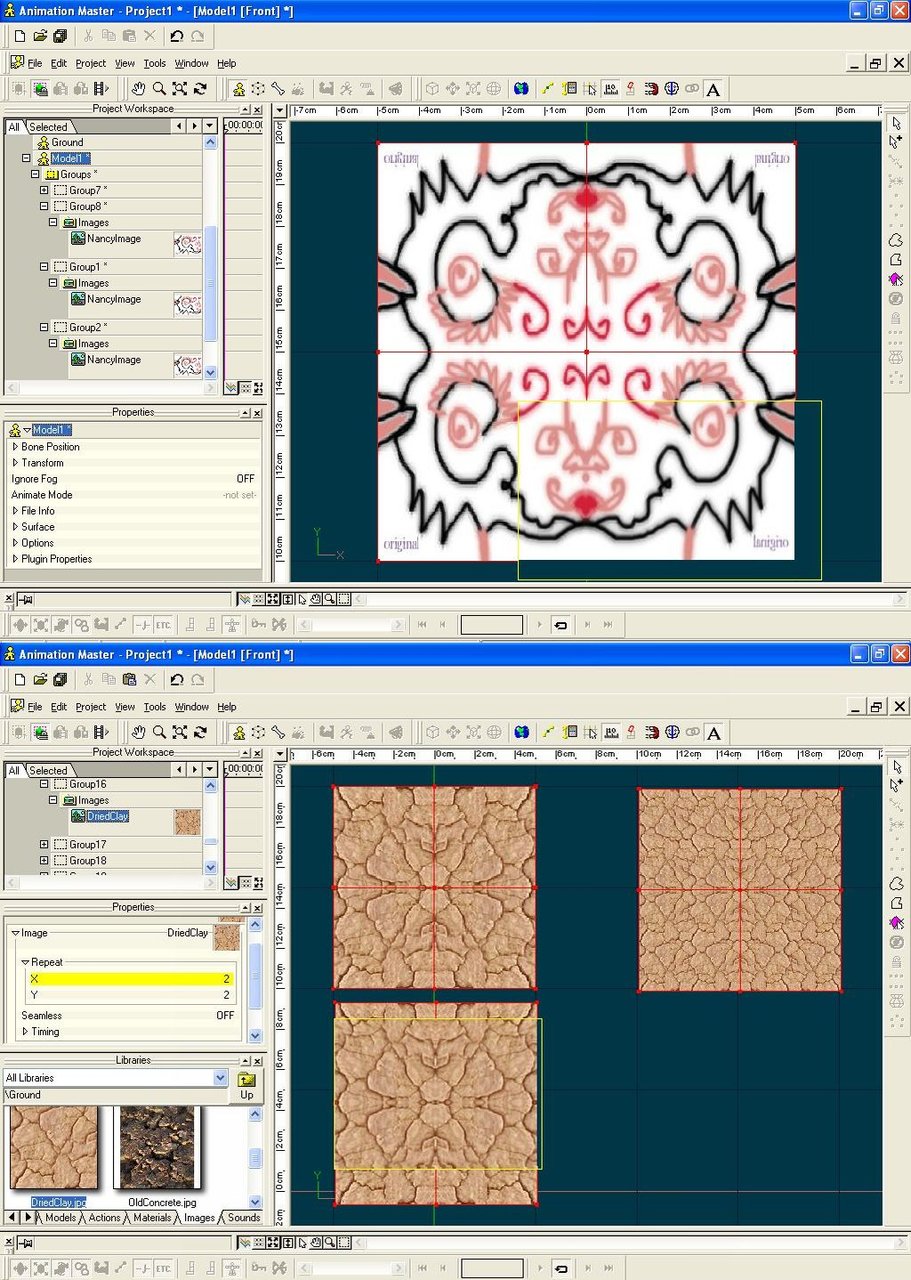-
Posts
21,632 -
Joined
-
Last visited
-
Days Won
114
Content Type
Profiles
Forums
Events
Everything posted by Rodney
-
That should get an award as the most beneficial modification of Thom we've seen in a very long time. Usually Thom just gets battered, bruised and blown up! Great acting Thom! (Watch how they snub him at the Emmys again this year) Seriously though, nice modification.
-
Its become something of a holiday tradition around here to watch that every year.
-
Correction. "Nothing says "Christmas" like a wannabe pirate who is pretending he is missing an eye." Keep up with the story!
-
I think the websubscription installer doesn't add them in automatically. Look in your v14 folder (or previous version) and you should find them there. As you state they are easy to create but can be nice to save away for a rainy day... especially those you've customized extensively. I always thought the Presets would be a great thing to share with one another but there's been little interest in that. Nowdays its probably more likely we would share Camera files that store those presets instead? I dunno.
-
Tell me about it. There is nothing like the dreaded deadline doom to get us motivated. But really... This works in another context too. I'm always interested in the learning process. I want to learn all there is to learn. That you managed to get this production packaged and presented in time for Christmas is quite a feat too. Congratulations.
-
Lighting makes a huge difference. Lighting has always been an essential element of animation. 2D... 3D... its still just as important. It permeates a work. Don Bluth lists Lighting as one of his 'Seven categories to Consider' in making any animated film. The list includes: - Character - Setting - Layout - Action - Pace - Lighting - Message All of these elements should be considered and work in concert to focus the eye on what is most important. Lighting is all about focus but it also establishes mood and tone. A:M has lightyears worth of lighting features to explore. Keep things as simple as possible as you go. Keep focused! A search on Lighting here in the forum will turn up excellent discussions on ways to approach the subject from A:M. There are also many scenes and projects on the Extra DVD to explore. The first image you posted is there to investigate.
-
Very nice! Your character in his first Christmas special. A Jolly good show. If I may ask... how long from concept to creation did this take?
-
Aha! We might as well have the final raffle now then? The big fish is hooked! Nah... 7 days and counting... tick... tick... tick...
-
Looks like its time to announce the prize. The winner of the third raffle will recieve a DVD (either the Modeling, Rigging or Animation DVD) from Barry Zundle's A:M training course; a $60 value. While I would recommend the Animation DVD to anyone just starting out the choice is completely up to the winner. Want to do some rigging? Need to do some Modeling? Into Animation? Any one of Barry's DVDs is well worth the winning. Should the winner already own all of Barry's DVDs an alternate prize will be awarded. Good luck, and thanks for hanging out with us here in the Newbies forum.
-
Youse twos are in!
-
Time is relative so that decision must be made by you. Just don't rule out the option as it may actually save you time in some instances. There are a lot of Texture generators out there. One recently posted (MapZone) is free and incredibly useful. See Talfraz's link for that. Edit: I see MapZone doesn't quite cut the mustard either. You may be more interested in a material generator. If that is the case and scaleability important try Darktree for that.
-
For many tiled images you can do the tiling right in A:M itself. No need for other programs. Attached is an example using Nancy's image. This example uses a 4 patch grid with Patch Images where the patch Normals are flipped and images rotated where necessary to create a tiled image. A benefit to this in-A:M workflow is that you can create tiled images with Alpha Channel transparencies relatively easy. Multi-Layered tiles with images over the top of one another... tiled images based on Materials... no problem. Edit: Added a second example of a photo texture from A:M's Library. Even with seamless tiles you may experience unwanted repetition. In cases such as these create your seamless texture and then use another image (perhaps even the same seamless texture) layered over it with the transparency turned up. This will add variety to the image and break up the repetition. Note the use of the 'Repeat' option to get different dirt textures using the same image.
-
Good luck in finding those. Specialized features required specialists to demonstrate those features. As many of us tend toward being generalists that often leaves little time for creating such tutorials. Its good that we have a very active forum though. Where someone posts a WIP demonstrating their exploration of a feature others are sure to join in. TWO provides a nice demonstration of the teamwork you mention. There are many examples where multiple hats were worn in production but its also a showcase for specialists too. For instance, the TWO characters could not have been animated easily without knowledgeable Riggers. If TWO had relied on my rigging skill it would have been dead in the water in the preproduction stage. You also raise a good point when you consider A:M's workflow and extensibility. For many projects a little knowledge may be just enough to get the job done. In a project where only basic rigging is required the aid of a specialist might not be required. Collaborative projects are a great place to shine as specialists.
-
Thats not really a registration popup as much as it is just there to personalize your copy of A:M. Models, Projects and the like created by you will be stamped with that information. Type in something for your 'Organization' and maybe it'll go away.
-
Forgive me if I leave the unicycling to you, k? If I just animate someone unicycling I won't have to recover from the scratches, bruises and broken bones. Looks like a lot of fun though.
-
I have to defer to the Mac users here in the community on this one. No similar activity here on my desktop/laptop. Silly question of the day though regarding he pop up: Have you registered your copy of A:M with Hash Inc?
-
Yikes! I hope not! (Looking at your animation now) Edit: Hmmm... Quicktime doesn't open your file. Perhaps more trouble on my end?
-
Some master it more easily than others apparently. What a dilemma I would be in without youse gals and guys.
-
Now thats what I'm talking about. Great use of the technology to deliver the message. I guess thats the whole point.
-
There are many dilemmas we face as we try to learn any given subject. Animation is no exception. Where should we focus our attention? How much about a given subject should we learn? How many processes must we master in order to reach our goal. The questions you ask and the solutions you discover will vary based upon your goals. To the animator Lighting a scene for instance is often a secondary or perhaps even tertiary goal. But if you are the one who will eventually light your own project its still a very important thing to learn. Animation is our primary focus here in the forum. But others aspects are important too. Should you try to learn it all, specialize in animation or set some other goal? What are your current strengths or weaknesses? How do they fit into your goals? Its the Animator's Dilemma; a dilemma that is yours.
-
Vern is right of course. By the time you get to Exercise 6 you will have a good understanding of how to make those characters work. I'll be working through TaoA:M in 2008 so here's your chance to get a head start on me.
-
Ahem... isn't it already too late for that? You are only as old as you feel your wife tells you. Which translates to: "You are doomed". But... look on the bright side! Then share that info with me won't you? 10 days left in the raffle!
-
It sounds like you are getting a hang on keyframing. Some success here too as I finally reinstalled Quicktime and can export animation again. Yay! I'm not sure my piddly movie is worth posting this late in the game. You've passed that stage in your animation. If you are experiencing slow times in dragging your keyframes around you may want to consider things you can live without while animating. It shouldn't be as slow a process as you are describing it. Consider what other programs you may be running. Consider the amount of RAM you have. Consider animating in Wireframe mode. Select only the bone you are trying to animate. (Not the entire model or other bones higher in the hierarchy) Save often so that A:M doesn't keep a lot of changes in memory. ...
-
Save that thing for when you are famous. Hopefully it'll still be edible.










